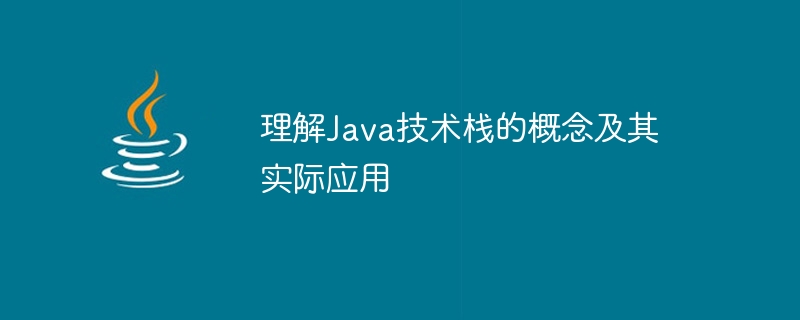

To understand the concept of Java technology stack and its practical application, specific code examples are required
Title: In-depth understanding of Java technology stack and its practical application
Introduction:
As a technical architecture widely used in the field of software development, the Java technology stack has become the first choice for many developers. It consists of a series of technologies that work together, covering all aspects of development from front-end to back-end. This article will delve into the concept of the Java technology stack, introduce its common technology components, and provide some practical code examples to help readers better understand and apply the Java technology stack.
1. Overview of Java Technology Stack
Java technology stack refers to a series of technical components used to develop various applications. It covers front-end development, back-end development, database management, server deployment and testing. Common Java technology stack components include HTML, CSS, JavaScript, Java Servlet, JavaServer Pages (JSP), Spring framework, Hibernate framework, MySQL database, etc. These components are introduced separately below.
2. Introduction to technology stack components
import javax.servlet.*; import javax.servlet.http.*; import java.io.*; public class HelloServlet extends HttpServlet { public void doGet(HttpServletRequest request, HttpServletResponse response) throws ServletException, IOException { response.setContentType("text/html"); PrintWriter out = response.getWriter(); out.println(""); out.println("Hello, World!
"); out.println(""); out.println("Hello, World!
"); out.println(""); } }
import java.sql.*; public class MySQLConnect { public static void main(String[] args) { String url = "jdbc:mysql://localhost:3306/mydatabase"; String username = "root"; String password = "password"; try { Connection connection = DriverManager.getConnection(url, username, password); Statement statement = connection.createStatement(); ResultSet resultSet = statement.executeQuery("SELECT * FROM users"); while (resultSet.next()) { System.out.println(resultSet.getString("username")); } connection.close(); } catch (SQLException e) { e.printStackTrace(); } } }
import org.junit.Test; import static org.junit.Assert.assertEquals; public class CalculatorTest { @Test public void testAddition() { Calculator calculator = new Calculator(); int result = calculator.add(2, 3); assertEquals(5, result); } }
Conclusion:
This article introduces the concept of Java technology stack and its common components, and provides corresponding code examples. It is hoped that through these practical examples, readers will have a deeper understanding of the principles and applications of the Java technology stack. In the actual development process, the corresponding technical components can be selected as needed, and modified and adjusted according to the sample code to meet specific business needs. Only by continuous learning and practice can we continue to make progress in the field of Java technology stack.
The above is the detailed content of Analysis of the concept of Java technology stack and its practical application. For more information, please follow other related articles on the PHP Chinese website!




